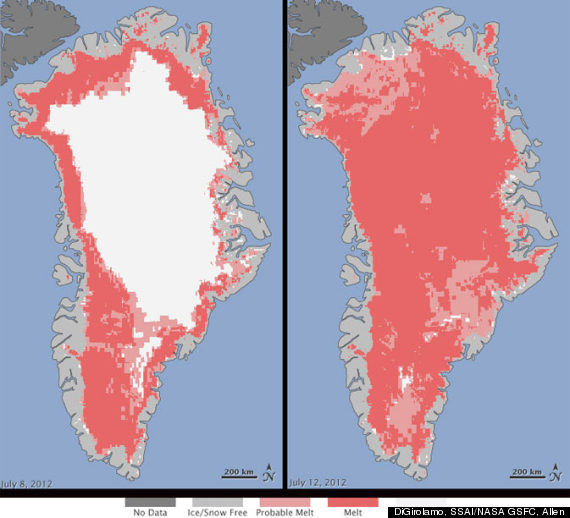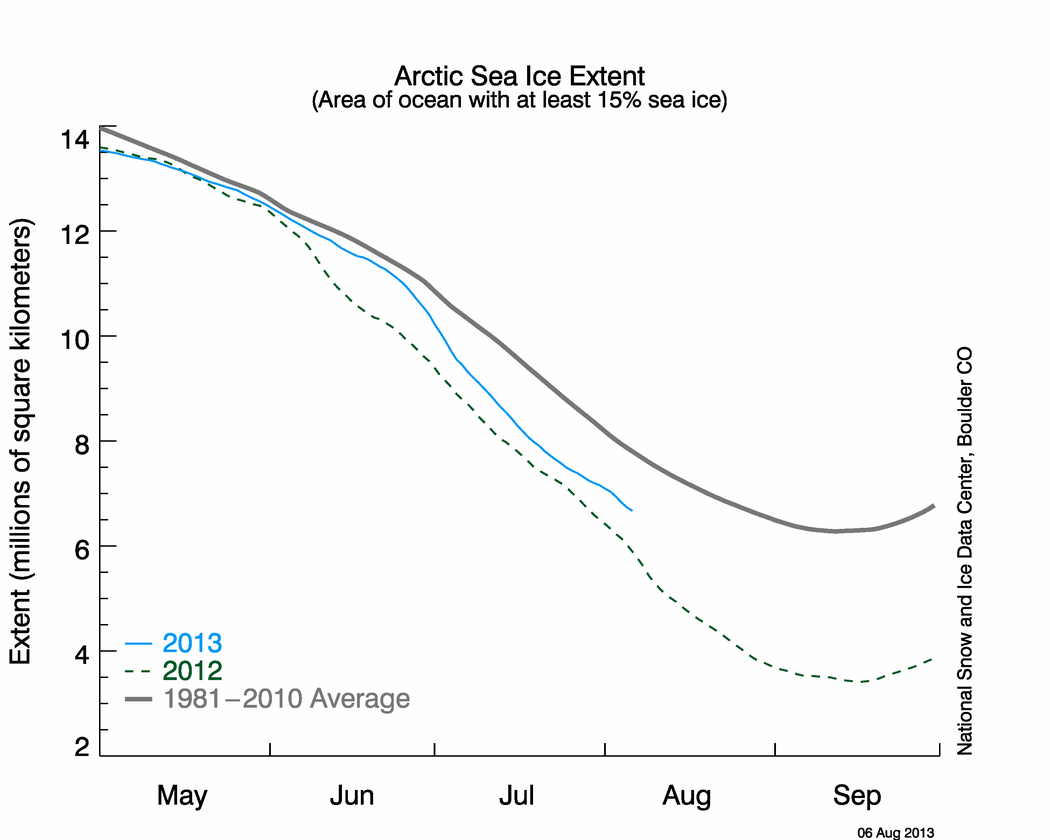brainpanhandler wrote:I'm scared to even click on this thread anymore.
Don't read this one.
 We have breached the first tipping point.
We have breached the first tipping point.Published September 25, 2012 | By John James
Two critical tipping points have been breached. This is the critical moment in an evolving system when feedback becomes strong enough to continue on its own without any further input. The tipping point is that moment when a gradual increase becomes unstoppable because the feedback maintains its own momentum. There is nowhere to go under these circumstances, and nothing can be done to prevent it continuing. It is the point when an everyday infection turns epidemic.
We have now breached the edge from two events. One is a remarkable collapse of summer sea ice in the Arctic with enormous consequences, especially on the Gulfstream, which is driven by the flood of cold water that emerges from under the Arctic ice. Now that summers are going to be more and more ice-free the permanent disruption of the Gulfstream becomes more likely. With it will come, inevitably, a change in temperatures and weather in North America and Europe. It may herald an ice age, but it is more likely, according to current thinking, to create even more dangerous weather patterns than we have experienced hitherto.
The other event is the extraordinary growth of methane being exhausted into the air, especially in Siberia that has gained more heat than anywhere else. Some is from clathrates under the ocean floor, and some from the melting of the permafrost. These emissions are now many many times greater than science had expected, and it is feared that they have reached a point where they are feeding back on themselves and are becoming unstoppable.
Together they have brought us to the first tipping point, as this will set off more.
As methane is some 20 times more powerful than carbon dioxide in heating the planet, further heat is now expected to proceed at an extremely fast rate. It is likely that from here on the consequences of what we have been doing will impact on our lives more severely every year. Larger hurricanes, catastrophic fires, burning temperatures, endless droughts and fierce storm surges are to be the norm.
Together, the feedback loops now in place in the Arctic and in Siberia will inexorably build on themselves. The time when we could have curtailed this disaster has passed. Hanging on to a 2oC limit was a mistake. Thinking of limits when feedback cuts in is ridiculous. Some will continue to argue that we can still do something. Politically, socially, and militarily this is highly unlikely.
If we had listened to the science ten years ago we may not now be in this fix. In 2006 on the PlanetExtinction website my banner said “we have eight years to stop …”, only eight years to end the use of fossil fuels and reverse the trend. It seems that I was over optimistic. We had six.
We are not going to stop the juggernaut of greed that is determined to destroy this beautiful earth, all for the sake of profit, so what can we do under the circumstances? The end-game will be played out in its own time, and will be dealt us by Gaia. But we, the ordinary people, need to protect our lives and our children and what we can of our heritage. There are many schemes and proposals such as Transition Towns, and of these we may take our pick.
Essentially we need ways to increase our personal and social resilience while coming into communities that are dedicated to preserving what matters most. It means training ourselves from today onwards in the ancient trades of farming and clothing, of healing and shelter.
At the same time we need to consider the moral issues, for they will determine how we will react in stress. We need to discuss our options in advance of the coming catastrophe. For example, a sea rise of some metres in Australia would create more than a million refugees. In shock, destitute, desperate for food and lodging, how would any community that has set out to preserve itself handle such an influx? Governments would be compelled to maintain order with reflexes that are likely to be draconian, and political bullies would take advantage of the panic for their own ends.
How does a Morality of Survival deal with this and many similar situations? If not publicly aired, and quickly, our ability to respond is likely to be overwhelmed by events.
Ideally, governments should take the lead, and provide nurture and guidance where it is needed. Frankly, I think this is highly unlikely. It therefore comes down to us, as individuals and as communities, to find our way through the mess that is coming.
We cannot hide our heads and pretend there is still time left to change this world into a better place. From here on we will be more and more at the mercy of the grim forces we have unleashed.
If we continue to direct our efforts towards modifying the rush to insanity, we will have wasted our time and will be thrashed by the outcome. It is now time to become Survivors.









